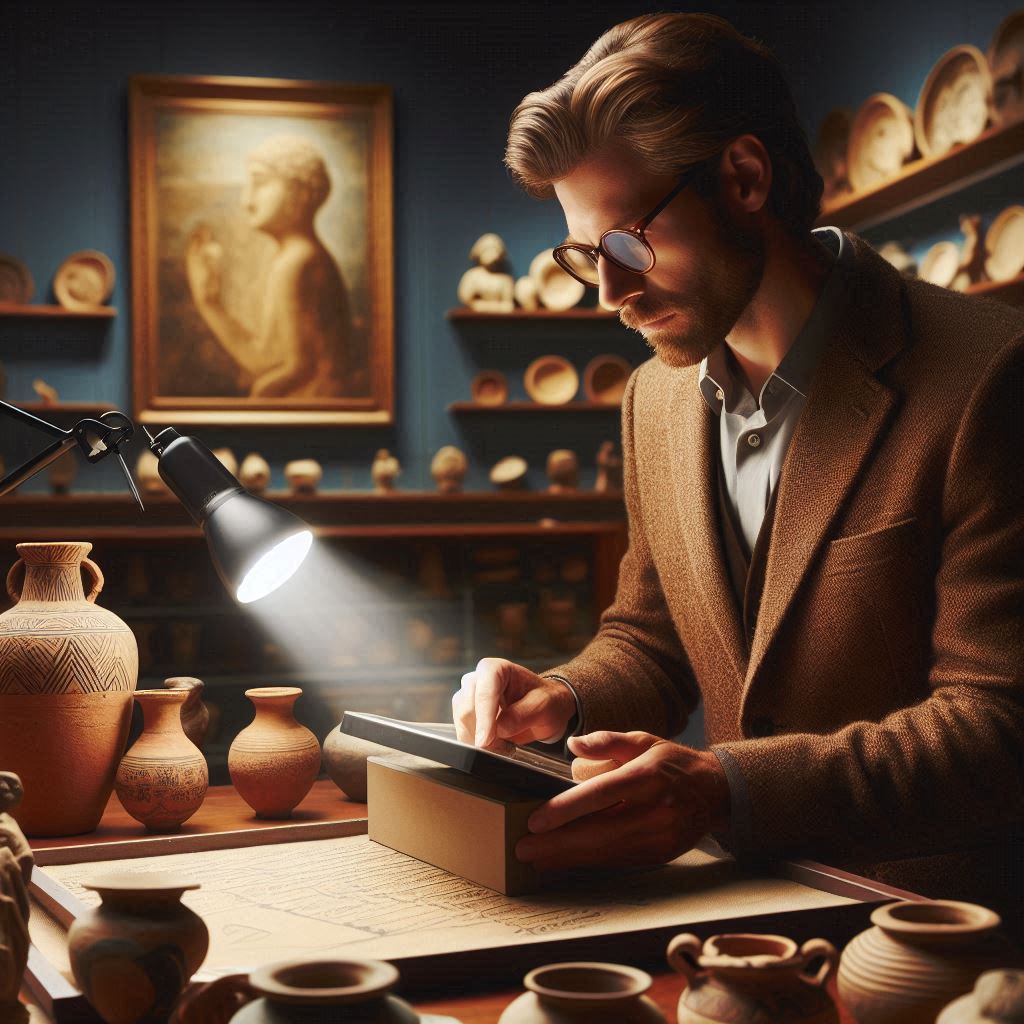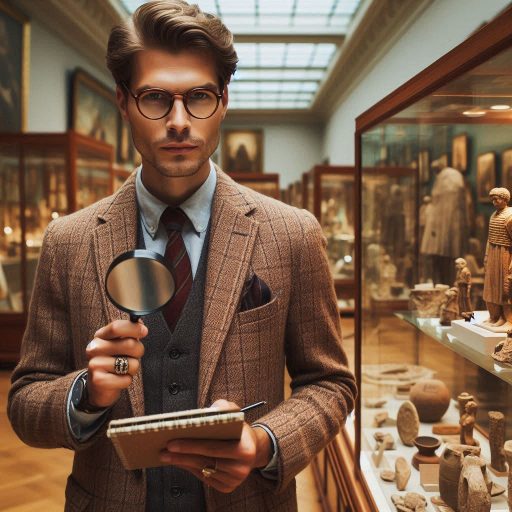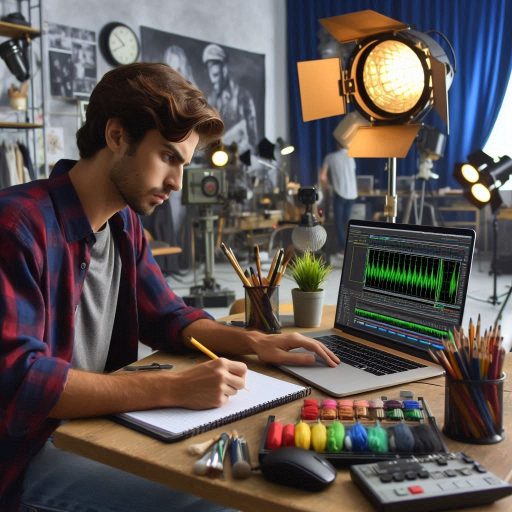Introduction
A museum curator plays a vital role in managing and interpreting collections of cultural significance.
They oversee the acquisition, preservation, and display of artifacts, ensuring that the public has access to and understands the historical and artistic value of these items.
Curators are responsible for creating engaging exhibitions that convey meaningful stories to visitors, bringing art and history to life through thoughtful presentation.
To succeed in this challenging role, curators must possess essential skills that enhance their effectiveness and adaptability in a dynamic environment.
Strong research abilities are paramount, allowing curators to deeply understand their collections and provide accurate context.
This knowledge is crucial for developing educational programs and interpretive materials that enrich the visitor experience.
Excellent communication skills are equally important, enabling curators to engage with diverse audiences and collaborate with various stakeholders, including artists, educators, and community members.
Curators often work as part of a team, making the ability to communicate ideas clearly essential for success.
Additionally, organizational skills help curators manage multiple projects, from exhibition planning to cataloging items and coordinating events.
Curators must balance numerous tasks while adhering to deadlines and budgets, making strong time management skills vital.
Education and Background
Necessary Educational Qualifications
Most museum curators hold at least a master‘s degree in museum studies, art history, or a related field.
This advanced education provides essential knowledge and skills necessary for the role.
Graduate programs typically cover various topics, including conservation, exhibition design, and collection management.
Some universities offer specialized programs focusing on specific areas, such as archaeology, ethnology, or contemporary art.
These programs prepare students to handle the unique challenges faced by curators in different types of museums.
Additionally, many curators hold bachelor‘s degrees in art history, fine arts, or humanities, providing a strong foundation.
Practical experience is also vital for aspiring museum curators.
Many graduate programs require internships or practicum experiences, allowing students to gain hands-on training.
Working in museums, galleries, or cultural institutions helps students develop critical skills.
These experiences can also lead to valuable networking opportunities, connecting them with industry professionals.
Importance of a Background in Art History, Museum Studies, or Related Fields
A strong background in art history is essential for museum curators.
This field of study equips curators with knowledge of artistic movements, styles, and significant works of art.
Understanding the historical context of artworks allows curators to create engaging exhibitions.
They can also provide valuable insights to visitors, enhancing their overall experience.
Museum studies courses further develop critical skills necessary for curation.
These programs often emphasize research, documentation, and preservation techniques.
Curators learn how to manage collections and protect artifacts from damage.
This expertise is crucial for maintaining the integrity of a museum‘s holdings.
In addition to art history and museum studies, related fields can also provide valuable skills.
Degrees in anthropology, cultural studies, or archaeology can enhance a curator’s understanding of cultural artifacts.
These programs foster critical thinking, research, and analytical skills.
Curators with diverse backgrounds can approach exhibitions from multiple perspectives, enriching the museum experience.
Moreover, excellent communication and interpersonal skills are necessary for curators.
They frequently collaborate with artists, educators, and other museum professionals.
Strong communication skills help curators effectively convey their vision for exhibitions.
This ability fosters teamwork and collaboration, vital for successful museum operations.
Basically, aspiring museum curators should pursue relevant educational qualifications, typically a master‘s degree in museum studies or art history.
A solid background in art history, museum studies, or related fields is crucial for developing the necessary skills.
These qualifications prepare curators to handle the responsibilities of the role, enhancing their chances for success in this rewarding career.
Read: Top Skills Needed for a Successful Character Designer
Research and Analytical Skills
Importance of Conducting Research for Exhibitions and Collections
Research plays a vital role in a curator’s daily responsibilities.
Curators must investigate the history and significance of the artifacts in their collections.
This research informs exhibition themes and helps create compelling narratives that resonate with visitors.
Thorough research ensures that the information presented to the public is accurate and enriching.
Curators often delve into various sources, including academic journals, historical documents, and expert interviews.
They may also collaborate with historians and other professionals to gather comprehensive insights.
This collaborative research process enhances the curator’s understanding and helps present a well-rounded perspective on the subject matter.
Additionally, conducting research helps curators identify potential acquisitions for the collection.
By understanding trends and gaps in their current collections, curators can make informed decisions about new artifacts.
This proactive approach strengthens the museum’s offerings and enhances its cultural relevance.
Research is also essential for developing educational programs.
Curators create materials that help audiences understand the context and significance of exhibits.
Well-researched educational content enriches the visitor experience and fosters a deeper appreciation for the arts and history.
Ability to Analyze and Interpret Artworks and Historical Artifacts
In addition to research skills, curators must excel in analyzing and interpreting artworks and historical artifacts.
This skill allows curators to provide meaningful insights into the pieces on display.
By understanding the artistic techniques, historical context, and cultural significance, curators can communicate their importance to the audience.
Curators often study the materials and techniques used in creating artworks.
They assess the condition of artifacts to determine appropriate preservation methods.
This analytical approach ensures the long-term care of collections and informs decisions about conservation practices.
Furthermore, the ability to interpret artifacts requires a keen understanding of cultural contexts.
Curators must appreciate how historical, social, and political factors influence art and artifacts.
This understanding allows them to present exhibits that are not only visually appealing but also intellectually engaging.
Effective interpretation also involves creating narratives that connect with diverse audiences.
Curators must communicate complex ideas in accessible ways.
This skill helps to engage visitors, sparking curiosity and encouraging discussions around the exhibits.
Therefore, successful museum curators rely on strong research and analytical skills.
Conducting thorough research ensures accurate representation and enhances educational programming.
The ability to analyze and interpret artworks and historical artifacts deepens the audience’s appreciation of the exhibits.
These essential skills contribute to a curator’s overall effectiveness and the museum’s mission.
Aspiring curators should prioritize developing these skills to thrive in their careers.
By mastering research and analysis, they can create engaging experiences that inspire and educate the public.
Read: Career Paths in Ceramic Art and Design
Communication Skills
The Need for Effective Communication in a Museum Curator Career
Effective communication is a cornerstone of a successful museum curator career.
Curators regularly interact with colleagues, artists, and visitors.
Clear communication fosters collaboration and promotes a positive working environment.
Curators must articulate their ideas and visions for exhibitions to their teams.
They collaborate with other professionals, such as educators, designers, and conservators.
This teamwork ensures that exhibitions run smoothly and meet educational goals.
Curators also engage with artists to discuss their work and intentions.
Understanding an artist’s perspective enhances the curation process.
Curators should ask questions and provide constructive feedback.
This dialogue helps build strong relationships between curators and artists.
Strong communication can lead to more impactful exhibitions that resonate with audiences.
Additionally, curators must effectively communicate with visitors.
They often give guided tours and lectures to share insights about exhibitions.
Being approachable and engaging encourages visitors to ask questions.
This interaction enriches the visitor experience and fosters a deeper understanding of the artwork.
Curators must adjust their communication style based on their audience.
Different audiences have varying levels of expertise and interest in the subject matter.
Importance of Written and Verbal Communication Skills
Both written and verbal communication skills are essential for presenting exhibitions and organizing events.
Curators frequently write exhibition proposals and catalog essays.
These documents require clarity and precision to convey ideas effectively.
A well-written proposal can secure funding and support for an exhibition.
It is vital for curators to express their concepts clearly and persuasively.
Verbal communication skills are equally important during presentations and public speaking engagements.
Curators often lead discussions and presentations on exhibition themes.
They must present complex information in an accessible manner.
Engaging storytelling helps captivate the audience‘s attention.
This approach encourages visitors to connect emotionally with the artwork.
Organizing events also demands strong communication skills.
Curators coordinate with multiple stakeholders, including vendors and sponsors.
Effective communication ensures that everyone involved understands their roles and responsibilities.
Curators must also promote events through marketing and outreach efforts.
Crafting compelling messages for promotional materials requires creativity and clarity.
Moreover, curators often prepare educational materials for exhibitions.
These materials should be informative and engaging, appealing to diverse audiences.
Balancing educational content with accessibility is a vital skill.
Curators must consider the needs of different visitors, from students to art enthusiasts.
In review, effective communication is crucial for museum curators.
They interact with colleagues, artists, and visitors regularly.
Strong verbal and written communication skills enhance their ability to present exhibitions and organize events.
By honing these skills, curators can create impactful experiences for their audiences.
Ultimately, effective communication fosters collaboration, enriches visitor experiences, and drives successful museum initiatives.
Read: Freelance Character Design: How to Get Started

Curatorial Experience
The Value of Hands-On Experience in Curating Exhibitions
Hands-on experience allows aspiring curators to apply theoretical knowledge in real-world settings.
It provides insights into the logistical challenges of organizing exhibitions.
Understanding how to curate an exhibit involves more than just selecting artworks; it requires managing space, lighting, and visitor flow.
By working directly on exhibitions, you learn about conservation techniques and artifact handling.
This knowledge is crucial for preserving valuable items while ensuring they are displayed effectively.
Practical experience also helps develop your problem-solving skills.
You will face unexpected challenges during the exhibition process that require quick thinking and adaptability.
Additionally, hands-on experience enhances your understanding of audience engagement.
Observing how visitors interact with exhibits helps you create more compelling displays.
This feedback is invaluable for improving future exhibitions.
Ultimately, hands-on experience fosters a deeper appreciation for the complexities of museum work.
Opportunities for Gaining Experience Through Internships, Volunteer Work, or Assistant Positions
Aspiring curators can gain practical experience through various opportunities.
Internships are one of the most valuable ways to enter the field.
Many museums offer internship programs that provide firsthand experience in curating exhibitions.
Interns often assist with research, exhibit planning, and installation.
This experience helps you build a professional network and learn from established curators.
Volunteering is another excellent way to gain relevant experience.
Many museums rely on volunteers for various tasks, including exhibit setup and visitor engagement.
Volunteering allows you to immerse yourself in the museum environment while developing valuable skills.
You can learn about different curatorial practices and gain insight into daily operations.
Assistant positions in museums or galleries also offer great experience.
Working as a curatorial assistant provides exposure to the inner workings of exhibit planning.
Assistants often support curators in research, cataloging, and organizing collections.
This role allows you to contribute to exhibitions while honing your skills and knowledge.
In addition to traditional museums, consider gaining experience in alternative spaces.
Art galleries, cultural institutions, and community organizations often seek curatorial assistance.
These environments provide diverse experiences and can enrich your understanding of various curatorial approaches.
Read: Career Paths: Becoming a Professional Character Designer
Organizational and Time Management Skills
Address the Necessity of Managing Multiple Projects and Deadlines
Museum curators often juggle several projects simultaneously.
They handle exhibitions, educational programs, and community outreach efforts.
Each of these projects has its own set of deadlines, requiring curators to be adept at time management.
Curators must prioritize tasks effectively.
They need to determine which projects require immediate attention and allocate their time accordingly.
Failing to manage multiple projects can lead to missed deadlines, causing disruptions in museum operations.
This situation can affect not only the curator’s reputation but also the institution‘s credibility.
Effective project management also involves collaborating with various stakeholders.
Curators work with artists, historians, and educators to develop exhibitions and programs.
They must communicate effectively to ensure everyone is aligned on goals and timelines.
Good communication fosters a team environment, promoting productivity and collaboration.
Curators also need to adapt to changing circumstances.
Sometimes, unexpected challenges arise, such as a delayed shipment of artifacts.
In these situations, curators must remain flexible and find solutions to keep projects on track.
Importance of Organizational Skills in Coordinating Exhibitions, Events, and Collections
Strong organizational skills are essential for coordinating exhibitions, events, and collections.
Curators must keep track of numerous details, from scheduling to budgeting.
Each aspect of an exhibition requires careful planning and execution.
When organizing an exhibition, curators develop timelines that outline each step of the process.
This includes securing funding, designing layouts, and arranging for installations.
A well-structured timeline helps curators manage their time and resources effectively.
Additionally, curators coordinate logistics for events.
They handle everything from guest lists to catering arrangements.
Organizational skills ensure that events run smoothly and leave a positive impression on attendees.
Curators also oversee collections, ensuring that artifacts are cataloged and stored correctly.
They maintain detailed records of each piece, including its provenance and condition.
This meticulous attention to detail safeguards the integrity of the collection and facilitates future research.
Moreover, organizational skills help curators develop educational programs.
They design curriculum materials, plan workshops, and coordinate with educators.
By organizing these programs, curators enhance the museum’s outreach efforts and foster community engagement.
Gain More Insights: Salary Expectations for Industrial Designers in 2024
Adaptability and flexibility
The Need for Being Adaptable to Changes in the Museum Environment
Curators often encounter unexpected challenges during exhibition planning.
For example, a key artifact may become unavailable due to unforeseen circumstances.
In such cases, curators must quickly pivot and find alternatives.
They might need to source other items that fit the exhibition theme.
This flexibility ensures that the exhibit remains engaging for visitors.
Additionally, curators may need to adjust programs based on visitor feedback.
If an educational program is not attracting interest, curators must evaluate and modify it.
They can incorporate new themes or formats to enhance visitor engagement.
This responsiveness to audience needs fosters a positive museum experience.
Technological advancements also require curators to be adaptable.
As museums increasingly incorporate digital tools, curators must embrace new technologies.
They may need to learn about virtual reality or digital archiving.
Staying current with these tools enhances their ability to present exhibitions effectively.
Curators who embrace technology can create innovative experiences for visitors.
Moreover, budget constraints can lead to changes in exhibition planning.
Curators must be resourceful when working with limited funds.
They may need to alter their original vision to fit financial realities.
This requires creative thinking and the ability to find alternative solutions.
By adapting to these constraints, curators can still deliver impactful exhibitions.
Ability to Pivot Quickly in Response to Unforeseen Circumstances or Opportunities
The ability to pivot quickly also applies to seizing unforeseen opportunities.
For example, a sudden opportunity to collaborate with a renowned artist may arise.
Curators need to act swiftly to capitalize on such moments.
This agility can lead to unique exhibitions that attract more visitors.
Networking plays a significant role in discovering these opportunities.
Curators must build relationships with artists, collectors, and other institutions.
These connections often open doors to collaboration and resource sharing.
Curators who cultivate these relationships can respond quickly when opportunities arise.
In summary, being adaptable is an essential skill for museum curators.
They must respond to changes in visitor expectations, funding, and technology.
Curators must also pivot quickly to overcome unforeseen challenges and seize opportunities.
This agility and resourcefulness contribute significantly to successful exhibition planning and program development.
Ultimately, adaptability allows curators to create enriching experiences for all museum visitors.
By embracing change and being proactive, curators enhance their effectiveness in the field.
Conclusion
Aspiring museum curators must focus on developing essential skills to build a successful career in this field.
A strong foundation in research abilities is vital, as curators need to understand and contextualize artifacts effectively.
This involves delving into historical, cultural, and artistic backgrounds to enrich the narratives presented in exhibitions.
Excellent communication skills are equally important.
Curators often engage with diverse audiences, from museum visitors to donors and colleagues.
They must convey complex ideas clearly and compellingly, whether through written labels, educational programs, or public speaking.
Organizational skills are crucial for managing collections and planning exhibitions efficiently.
Curators handle numerous artifacts simultaneously and need to track their condition and location meticulously.
Attention to detail ensures the proper assessment of each item, which is critical for its preservation and care.
Creativity also plays a significant role in curatorial work.
Designing engaging exhibits requires innovative thinking to capture visitors’ interest and provide memorable experiences.
Curators must craft compelling narratives that connect artifacts to broader themes and cultural contexts.
In today‘s digital landscape, technical skills in digital tools and museum technologies are increasingly important.
Familiarity with software for collections management, exhibit design, and audience engagement will enhance a curator’s effectiveness and adaptability in the field.
[E-Books for Sale]
The Big Book of 500 High-Paying Jobs in America: Unlock Your Earning Potential
$19.99 • 500 High-Paying Jobs • 330 pages
Explore 500 high-paying jobs in America and learn how to boost your career, earn more, and achieve success!
See All 500 High-Paying Jobs of this E-Book
1001 Professions Without a Degree: High-Paying American Jobs You Can Start Now
$19.99 • 1001 Professions Without a Degree • 174 pages
Discover 1001 high-paying jobs without a degree! Unlock career tips, skills, and success strategies for just $19.99!




